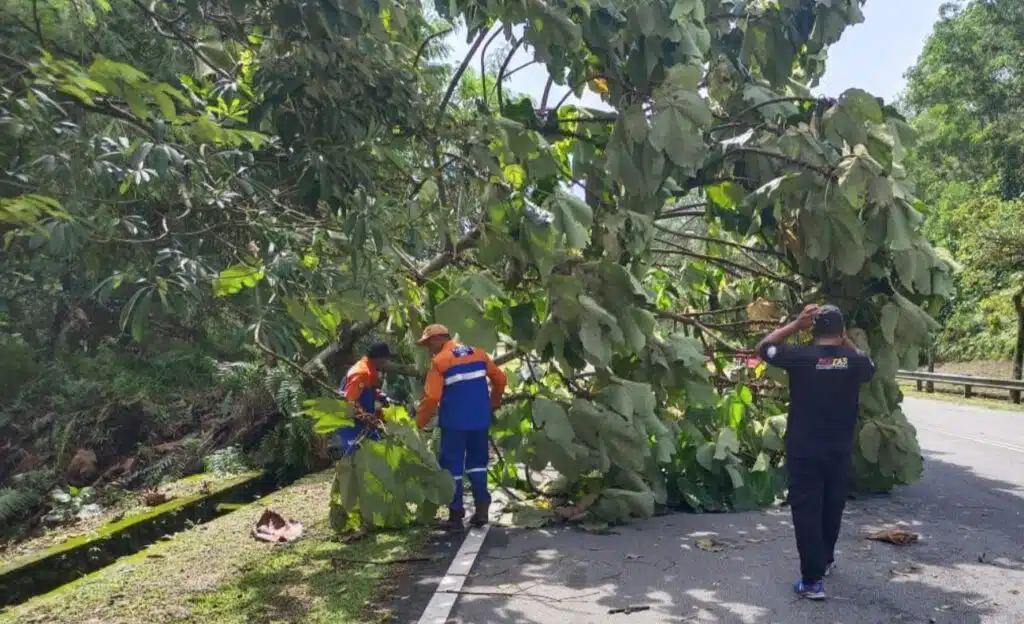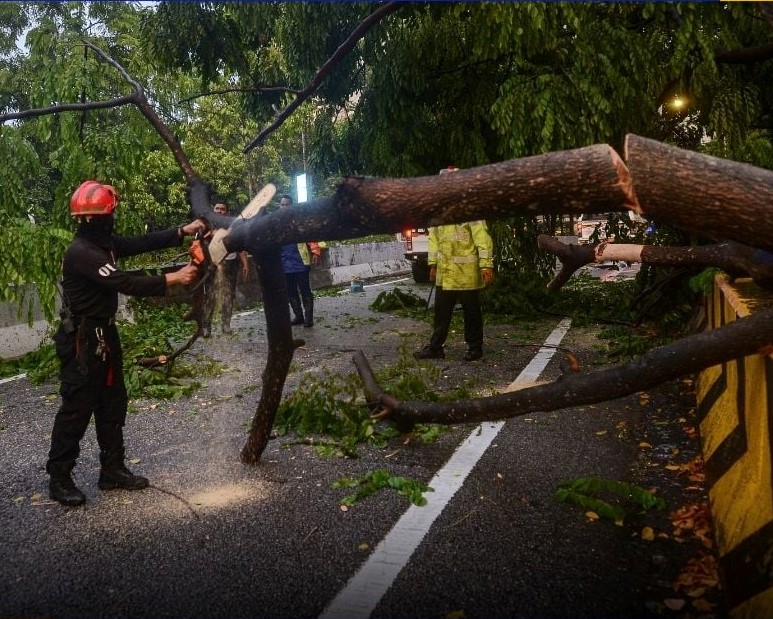KUALA LUMPUR, May 23 — Cases of trees being uprooted during stormy weather have of late been on the rise in urban areas. City folks are concerned about it as some of the incidents have resulted in the loss of lives as well as damage to property amounting to thousands of ringgit.
Last Friday alone when the Klang Valley was hit by a severe storm, 37 cases of fallen trees were recorded here and another 13 in Selangor, according to the Federal Territory Malaysian Civil Defence Force.
Statistics provided by the Malaysian Civil Defence Force (APM) showed an increase in such cases nationwide in the last few years. In 2021, a total of 3,081 cases were reported and last year, the number rose to 3,358. This year, 499 incidents were recorded in the first two months.
The fatalities reported recently included a 13-year-old girl who was struck by a falling tree on January 19 while playing with her two siblings at a park in Kampung Balok Baru in Kuantan, Pahang.
On December 29 last year, a 55-year-old woman was killed after a tree that was uprooted by strong winds fell on her house in Kampung Laut Kinarut, Papar, Sabah.
Experts Bernama spoke to highlighted the need for the authorities to take immediate steps to prevent such incidents as they endanger people’s lives and property.
Urban areas at risk
According to former president of the Malaysian Society of Arborist Prof Dr Ahmad Ainuddin Nuruddin, trees in urban areas are more prone to being uprooted due to factors such as insufficient physical space and the selection of inappropriate species.
Trees planted in spaces with limited soil accessibility often have roots that are not strong enough and have difficulty absorbing water.
“In urban places, a lot of trees are planted on roadsides and beside footpaths. In such situations, the trees are not able to develop properly, causing them to become unstable. Trees planted in forested areas or suburbs don’t face such problems,” he said, adding that he has seen a large tree species that can grow up to 30 metres high being planted in an urban area.
“Such trees are at risk of toppling down if their roots are not strong enough to provide support.”
Ahmad Ainuddin, who is also the former director of the Institute of Tropical Forestry and Forest Products at Universiti Putra Malaysia, suggested that local councils and developers determine the critical root zone for trees planted in every development project to ensure the buildings are located at an appropriate distance from the trees.
The critical root zone of a tree refers to the area containing its root radius. If trees are planted in adherence to their critical root zones, their roots are able to grow and function optimally.
Ahmad Ainuddin added that the authorities concerned should seek the services of an arborist to ensure trees are planted in a safe manner.
He also urged local authorities and other parties to monitor mature trees as most cases of uprooted trees involve those planted in the 1950s that were not maintained properly.
“Trees must be evaluated at least twice a year but we can find many trees in urban areas that are neglected and uncared for. Such trees are at risk of toppling down or having their branches breaking and falling when it rains heavily and the wind blows strongly,” he said.
Sick trees
Ahmad Ainuddin also said disease can cause trees to decay and fall, adding that a tree usually becomes sick when its roots are not able to absorb enough water and minerals.
This can happen when the soil in an area is not suited to the species planted there.
He pointed out that if the situation is not addressed soon, it will complicate the nation’s efforts to realise its Greening Malaysia programme through the 100 Million Tree Planting campaign, an initiative under the 12th Malaysia Plan (2021 to 2025).
He found that many participants of this programme were focusing merely on tree planting rather than the long-term care and maintenance of the trees.
Nearly 60 million trees from 1,500 species have so far been planted nationwide under the initiative, according to the latest data provided on the website, 100jutapokok.gov.my.
“While the concept and vision of the Greening Malaysia programme are correct as they enhance public awareness of the importance of preserving our forests, there can however be improvements in the way it is implemented,” he added.

Periodic monitoring
The Subang Jaya City Council (MBSJ), when contacted, told Bernama it no longer plants trees in front of houses in new housing schemes to prevent damage to the infrastructure and building structures.
It said new saplings are only planted on road shoulders and in public parks or buffer zones. To enable MBSJ to monitor the health of the trees periodically, only species that grow to a moderate height or grow slowly are planted.
To prevent trees from rotting and falling due to any disease, MBSJ said it has sought the advice of an arborist to check if the affected trees can be treated or not.
“If a tree is found to be at risk of falling, then we will appoint a tree maintenance contractor to reduce the risk of the tree falling or branches breaking off,” it said.
MBSJ said to prevent trees from falling, it carries out monitoring and checking of its inventory of trees as well as maintenance works periodically.
Meanwhile, Lt (PA) Mohd Harith Che Noh, a civil defence assistant at APM’s Emergency and Humanitarian Services branch, shared a few tips on how to identify trees or branches that are at risk of falling.
According to him, a tree or branch is at risk of falling if it leans at an angle of over 45 degrees.
If the tree concerned belongs to an individual, then that person must pay a contractor to trim the tree or cut it down. If the tree comes under the supervision of the local council, then the public must contact the authority concerned to take the necessary action as soon as possible.
— Bernama





